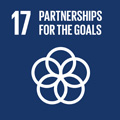- Docente: Andrea Bolognesi
- Credits: 8
- Language: Italian
- Teaching Mode: Traditional lectures
- Campus: Bologna
- Corso: Single cycle degree programme (LMCU) in Medicine and Surgery (cod. 8415)
Learning outcomes
The students will learn the etiology of the disease processes, the pathogenetic mechanism of their development, the basic reactions to abnormal stimuli and the morphological changes they induce in cells and tissues, together with the systemic and functional consequences for the organism. By the elaboration of molecular, morphologic, microbiologic and immunologic knowledges, the students will understand the wherefores of the signs and symptoms manifested by patients and will be provided with a sound foundation for evidence based medicine.
Course contents
Each line of text (excluding titles) corresponds approximately to one hour teaching unit
INTRODUCTION
Aim of the course
Concept of disease, etiology and pathogenesis
ENVIRONMENTAL PATHOLOGY
Physical injuries
Local and systemic effects of high and low temperatures
Smoke damage
Chemical injuries
Ethanol: absorption and detoxification
Ethanol: acute and chronic toxic effects
Pathology from biological agents
Local and systemic effects of endotoxins
Pathogenic action of exotoxins (diphtheria, cholera, tetanus and botulinum)
CELLULAR PATHOLOGY
Cellular adaptations
Atrophy
Hypertrophy
Hyperplasia
Metaplasia and dysplasia
Cell jnjury
Etiopathogenesis of cellular damage
Vacuolar degeneration
Steatosis: etiology and classification
Steatosis: pathogenic mechanisms
Cell death
Apoptosis: etiopathogenesis
Apoptosis: morphological alterations
Necrosis: etiopathogenesis
Necrosis: morphological alterations and classification
PROTEIN MISFOLDING DISEASES
Systemic amyloidosis
Localized amyloidosis
RESPONSE TO THE DAMAGE
Acute inflammation
General characteristics
Etiology
Vascular phenomena
Exudative oedema
Cell phenomena
Phagocytosis
Chemical mediators: plasma proteases
Chemical mediators: cellular products
Classification of acute inflammations
Outcomes and systemic effects
Chronic inflammation
Chronicization of acute forms
Granulomatous forms
Pneumoconiosis
Etiopathogenesis of the tuberculous disease
Outcomes and consequences of tuberculosis
TISSUE REPAIR: REGENERATION, HEALING, AND FIBROSIS
Granulation tissue
Wound healing
Sclerosis
Morphology of cirrhotic liver and consequences
PATHOPHYSIOLOGY
Pathophysiology of haemostasis
Pathophysiology of endothelial cells
Etiopathogenesis of vascular purpura
Etiopathogenesis of thrombocytopenia and thromboastenia
Etiopathogenesis of coagulation defects
Etiopathogenesis of disseminated intravascular coagulation
Pathophysiology of vessels and circulation
Classification of arteriosclerosis
Risk factors of atherosclerosis
Pathogenesis of atheroma
Consequences of atherosclerosis
Etiopathogenesis of thrombosis
Classification of thrombosis
Etiology and classification of the emboli
Pathogenesis and consequences of embolism
Etiopathogenesis of the infarction
Etiopathogenesis of hypertension
Etiopathogenesis of shock
Etiopathogenesis of hypoxia and cyanosis
Hypoxic, anemic, stagnant and histotoxic hypoxia
Pathophysiology of the endocrine system and metabolism
Etiopathogenesis of diabetes mellitus
Consequences of diabetes
Etiopathogenesis of transudative edema
Localized and generalized transudative edema
Calcium metabolism
Dystrophic and metastatic calcifications
Pathophysiology of thermoregulation
Etiopathogenesis of fever and non-febrile hyperthermias
Readings/Bibliography
V. Kumar, A.K. Abbas, J.C. Aster. “Robbins & Cotran - Pathologic Basis of Disease, 10th edition, 2020, Elsevier Ed.
Pontieri G.M. “Patologia Generale e Fisiopatologia Generale", VI Edizione, 2019, Piccin Editore
Teaching methods
The course includes 64 hours of lessons on environmental, cellular and extracellular pathology, inflammatory-reparative response and general pathophysiology.
Assessment methods
The learning level will be assessed at the end of classes. The examination will include two questions to ascertain the knowledge the student has about the program subjects and his/her ability to discuss the etiopathogenesis and general pathophysiology of each subject. One of the two questions will include a practical microscopy test to assess the learning of the General Pathology Laboratory. The on line registration to the exam is mandatory.
Teaching tools
Slides containing schemes and figures will be projected during lessons. This educational material is available online at https://iol.unibo.it/
Office hours
See the website of Andrea Bolognesi
SDGs




This teaching activity contributes to the achievement of the Sustainable Development Goals of the UN 2030 Agenda.
